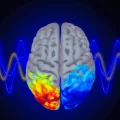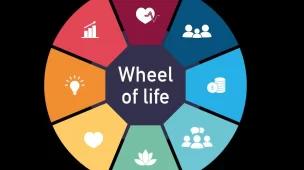Introduction to Transcendental Meditation
Transcendental Meditation (TM) is a form of silent mantra meditation developed by Maharishi Mahesh Yogi. This method involves the use of a mantra and is practiced for 15–20 minutes twice per day. It is characterized by its simplicity and deep relaxation effects. Practitioners sit comfortably with both eyes closed, allowing them to eliminate distractions and better facilitate the transition of their mind toward profound calmness and inner peace. TM has gained global popularity, being practiced in various institutions worldwide, including schools, corporations, and even prisons, and is favored by many celebrities and business leaders. This technique not only helps in reducing stress but also enhances overall well-being and mental clarity.
What is Transcendental Meditation?
TM is a simple, natural, effortless technique practiced 20 minutes twice each day while sitting comfortably with the eyes closed. The practice is said to allow your mind to settle inward beyond thought to experience the source of thought — pure awareness, also known as transcendental consciousness.
Origins and Historical Context
TM was brought to the West in the 1960s by Maharishi Mahesh Yogi, an Indian sage. Maharishi popularized the technique worldwide and trained over 40,000 TM teachers who have taught more than five million people the practice.
How It Differs From Other Forms of Meditation
Unlike mindfulness or concentration forms of meditation, TM involves no concentration, no control of the mind, no contemplation, and no monitoring of thoughts.
Benefits of Transcendental Meditation
Psychological Benefits
- Reduces stress and anxiety
- Improves mood and emotional intelligence
- Enhances self-esteem and self-awareness
Physical Health Benefits
- Lowers blood pressure
- Reduces cortisol (stress hormone)
- Improves sleep patterns
- Enhances brain function and memory
Spiritual and Emotional Benefits
- Promotes a greater sense of peace and wellbeing
- Enhances empathy and connectivity with others
- Fosters a deeper understanding of oneself and the universe
Practicing Transcendental Meditation
Basic Techniques
- Find a comfortable place to sit with your eyes closed.
- Silently repeat a mantra in your mind.
- Let your mind and body relax naturally.
Adapting the Meditation Practice Without a Certified TM Teacher:
1. Choosing a Mantra:
- Generic Mantra: If you are unable to receive a personalized mantra from a TM teacher, you can choose a generic mantra. Traditional mantras such as “Om,” “Ram,” or “Sham” can be effective. These are considered to be universal or “beej” (seed) mantras in various meditation practices and are known for their vibrational qualities.
- Comfort & Resonance: Select a mantra that feels comfortable and resonant to you. The sound should be pleasant and easy to repeat in your mind.
2. Practicing with the Chosen Mantra:
- Quiet Environment: Find a quiet and comfortable place where you can sit undisturbed.
- Comfortable Posture: Sit in a relaxed position with your hands on your lap, back straight, and both eyes closed.
- Breathing: Begin with deep breaths to relax your body and mind, settling into a quieter state.
- Repeating the Mantra: Silently repeat your chosen mantra in your mind. Let the repetition be gentle and not forced.
- Duration: Aim to meditate for about 20 minutes, twice a day. This is similar to the traditional TM practice timings.
3. Maintaining a Non-Judgmental Mindset:
- Gentle Focus: Maintain a gentle focus on the mantra. When you notice your mind wandering, softly bring it back to the mantra without criticizing yourself.
- Regular Practice: Consistency is key in any meditation practice. Regular meditation helps in stabilizing the mind and enhancing the benefits over time.
4. Mindfulness and Acceptance:
- Mindful Awareness: Be aware of your thoughts and surroundings without getting attached. Allow thoughts to pass by like clouds in the sky.
- Acceptance: Embrace whatever comes during your meditation practice with acceptance. Each session can vary, and it’s important to be kind and patient with yourself.
Advanced Techniques
- Incorporate more complex mantras or longer meditation sessions.
- Explore deeper aspects of the philosophy behind TM.
Tips for Beginners
- Be regular with your practice.
- Do not strain to control the mind.
- Attend a TM course for thorough understanding.
Scientific Research and Studies
Overview of Recent Studies
Studies have shown that TM can decrease the risk of heart disease and stroke, improve cognitive functions, and reduce symptoms of PTSD.
Criticisms and Controversies
Some critics argue that the claims of TM are exaggerated and lack scientific basis.
Personal Stories and Testimonials
Success Stories
Many individuals report significant improvements in stress levels, happiness, and overall life satisfaction from practicing TM.
Challenges and How They Were Overcome
New practitioners sometimes struggle with consistency or skepticism but find great benefits with persistent practice
Alternative to Personalized TM Mantra:
If you prefer a structured approach but lack access to a TM course, you might consider other meditation forms that utilize mantras or focus points, such as:
- Mindfulness Meditation
- The Genius Wave
- Guided Meditation using apps or online resourcesT
Summary of Benefits
Transcendental Meditation (TM) offers a wide array of benefits that encompass mental, physical, and emotional aspects of health. Here’s a concise overview of the key advantages:
Mental Benefits
- Stress Reduction: TM significantly lowers stress levels by enabling the body to release tension and achieve a state of deep relaxation.
- Enhanced Clarity and Productivity: Regular practice of TM helps clear the mind, improving focus and productivity.
- Better Cognitive Function: Studies have shown that TM can lead to improved cognitive functions, including better memory and problem-solving skills.
Physical Benefits
- Lower Blood Pressure: TM helps reduce blood pressure through deep relaxation and stress reduction.
- Improved Sleep Patterns: The deep relaxation achieved through TM aids in enhancing the quality of sleep.
- Boosted Immune System: Regular meditation can strengthen the immune system by reducing stress and promoting better overall health.
Emotional Benefits
- Emotional Stability: TM aids in balancing emotions, contributing to improved relationships and personal interactions.
- Increased Happiness: Regular practitioners of TM often experience increased levels of happiness and contentment.
- Greater Self-Awareness: By fostering a deeper connection with one’s inner self, TM enhances self-awareness and promotes a greater understanding of one’s thoughts and feelings.
These benefits collectively contribute to a heightened quality of life, making TM a compelling practice for those seeking a holistic approach to wellness.
Conclusion:
Practicing meditation without a certified TM teacher is certainly possible and can still be profoundly beneficial. The key is to choose a mantra that resonates with you, create a conducive environment for meditation, and practice regularly with patience and openness. This self-guided approach can also serve as a valuable personal journey towards mindfulness and relaxation.
By adapting these guidelines, you can embark on your meditation journey and experience the calming and transformative benefits of meditating with a mantra, even without direct TM teacher guidance.
Transcendental Meditation is a simple, natural form of meditation that involves the use of a personal mantra, practiced for 20 minutes twice per day while sitting comfortably with the eyes closed. It is designed to allow the individual’s mind to settle inward beyond thought to experience the source of thought — pure awareness, also known as transcendental consciousness.
Unlike mindfulness or concentration forms of meditation, which involve focusing on a thought or object, TM is a mantra-based technique that allows the practitioner to experience a state of pure consciousness without concentrated effort. There is no need to control the mind or consciously direct thoughts during TM.
While it is recommended to learn TM from a certified teacher to ensure correct practice and maximize benefits, individuals without access to a teacher can start with a generic mantra in a similar meditative practice. This can still provide significant benefits, though it may differ slightly from the traditional TM technique.
Practitioners of TM often report reduced stress and anxiety, improved mental clarity and focus, enhanced sleep quality, and greater overall happiness. Physical benefits include lower blood pressure and a strengthened immune system. Emotional gains are also significant, including increased self-awareness and emotional stability.
Many individuals notice improvements in stress levels and mental clarity within a few days to weeks of starting TM. However, the full range of benefits typically unfolds over several months of regular practice.
Yes, numerous studies have validated the benefits of TM. Research has shown that TM can reduce the risk of heart disease and stroke, improve cognitive functions, and decrease symptoms of PTSD, among other benefits. These studies provide strong scientific backing for TM as an effective technique for enhancing physical and mental health.












